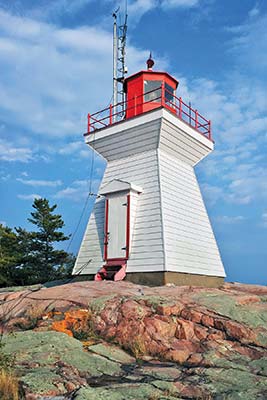
Killarney East Lighthouse
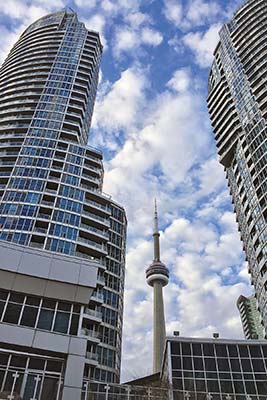
Toronto skyline
FOLLOWING THE UNDERGROUND RAILROAD
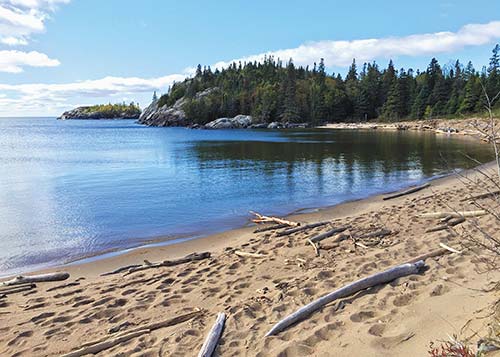
Pukaskwa National Park.
Buzzing urban centers with hip nightspots and eclectic shops. Creative chefs, international eateries, and plenty of local specialties. Historic sites and modern art museums. Romantic getaways, outdoor adventures, and activities for the kids. And all at a good value, too? That’s Ontario.
Toronto is Canada’s most multicultural city. Then there’s Niagara Falls, Canada’s most visited tourist attraction; Ottawa, the grand national capital; and theater festivals at Stratford and Niagara-on-the-Lake.
Beyond these well-known attractions, Ontario offers much more. Bordering four of the five Great Lakes as well as Hudson Bay, Ontario has more than 3,000 kilometers (2,300 miles) of shoreline. This vast forested province stretches from the southernmost point in Canada nearly to the Arctic.
With all that space, Ontario has countless options for outdoor adventures. Skate along the world’s largest ice rink, hike one of Canada’s longest trails, or swim in its biggest “swimming hole.” Go cycling, canoeing, white-water rafting, cross-country skiing, and dogsledding. You can even scuba dive among shipwrecks on the floor of the Great Lakes.
Home to Canada’s most diverse population, Ontario delivers cultural adventures as well. More than half of Toronto’s residents were born outside Canada, giving the city a vibrant multicultural buzz. You could breakfast on French croissants, lunch on Japanese okonomiyaki, and end your day with Italian, Greek, or indigenous fare.
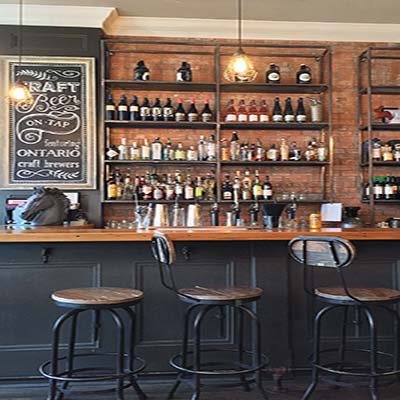
Stratford’s Red Rabbit bistro
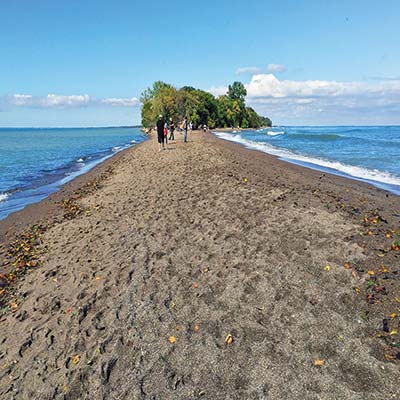
Point Pelee National Park
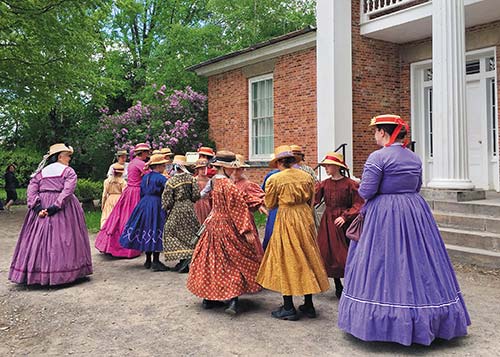
historic interpreters dressed as pioneers at Upper Canada Village
In central Ontario, Old Order Mennonites still travel by horse and buggy and sell homemade preserves at local farmers markets. Roughly 25 percent of Canada’s indigenous population lives here, so you can hike through the wilderness with a native guide or watch a performance at a First Nations-run theater. You can also follow the Underground Railroad, which sheltered people fleeing slavery during the U.S. Civil War.
Ontario has laid-back college towns and scores of wineries, maple syrup makers, and apple orchards. Take in a hockey game or take the train to a remote eco-lodge. You’ll find the Thousand Islands and far more than a thousand things to do.
A thousand and counting. That’s Ontario.
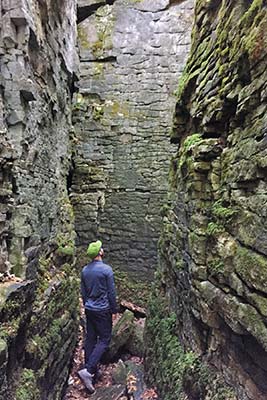
Owen Sound’s cliffs and caves.
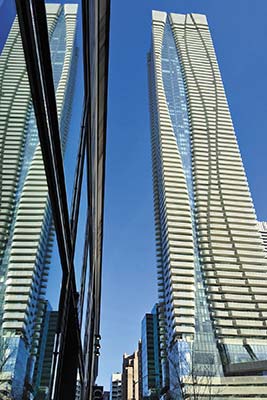
skyscrapers in Toronto’s Bloor-Yorkville district
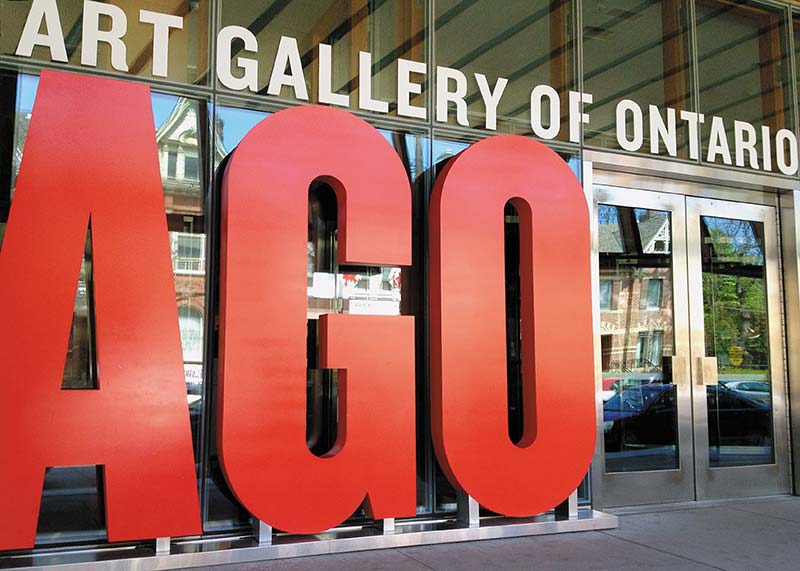
1 Toronto Art and Culture: It’s more than just the world-class museums, galleries, music, and theatre. Multicultural festivals, foods, and neighborhoods make Ontario’s largest city a prime destination for cultural explorers (click here).
2 Niagara Falls by Water, Land, or Air: Experience Ontario’s greatest waterfall—and biggest visitor attraction—by boat, along waterside cycling or hiking routes, and even by helicopter (click here).
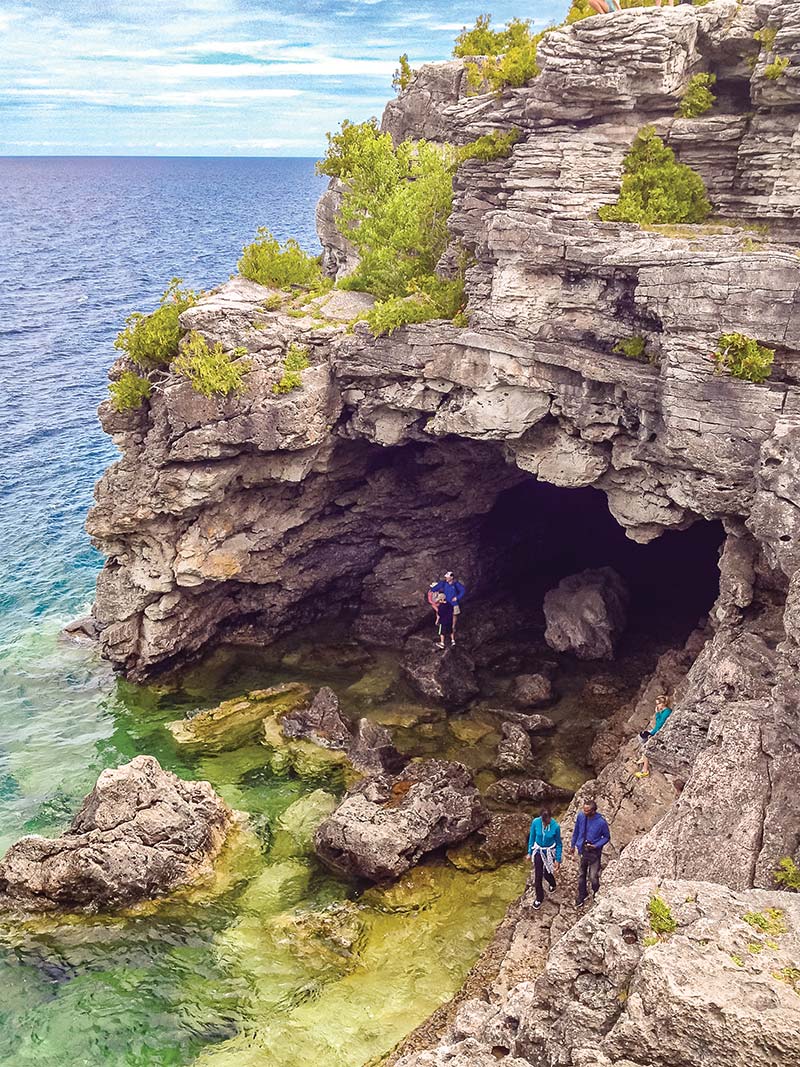
3 Georgian Bay Road Trip: Drive past the dramatic rock formations and stunning blue waters of the Bruce Peninsula to the indigenous communities on Manitoulin Island and over the pink granite hills in Killarney Provincial Park (click here).
4 Local Food Adventures: Eat your way through Toronto’s restaurant scene (click here) and follow trails devoted to cheese (click here), butter tarts (click here), and apple pies (click here).
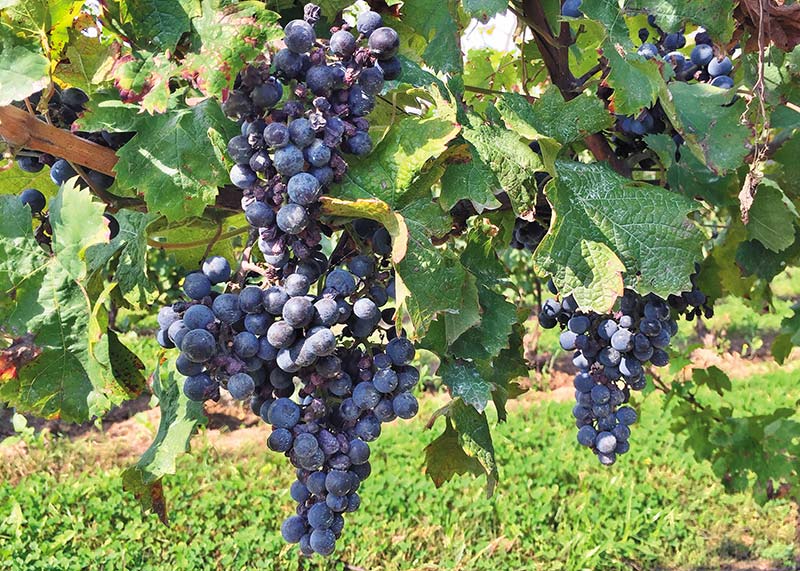
5 Wine-Tasting: Get away to wine country on the Niagara peninsula (click here and click here) and in Prince Edward County (click here)… or discover emerging wine regions near Lake Huron and Georgian Bay.
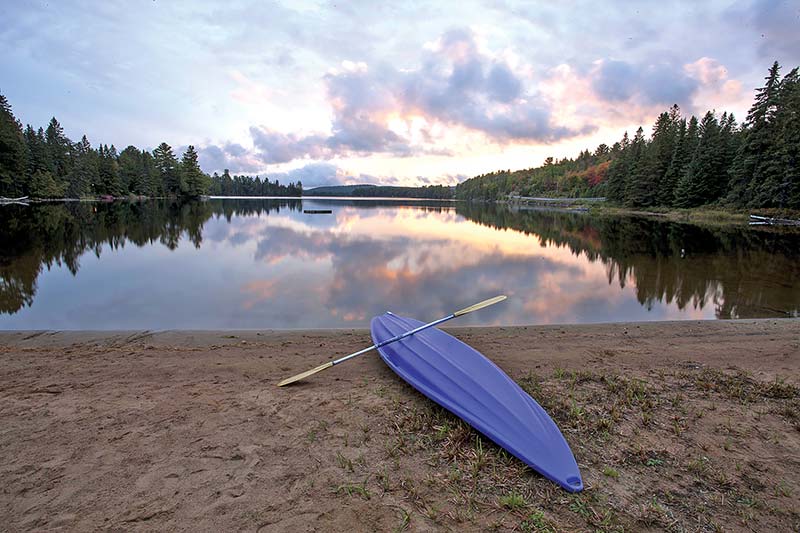
6 Northern Lakes Getaways: Adventure awaits from Muskoka (click here) to the striking landscapes along Georgian Bay (click here) and Lake Superior. (click here).
7 Explore Canada’s Roots: Start your history tour in Canada’s first capital–the hip present-day city of Kingston (click here). Then follow the Rideau Canal (click here) to Ottawa, the seat of the nation’s government, where you can trace the country’s roots on Parliament Hill (click here).
8 Indigenous Experiences: Learn more about indigenous culture at Manitoulin Island (click here), Moose Factory Island (click here), and the Curve Lake First Nations Reserve (click here).
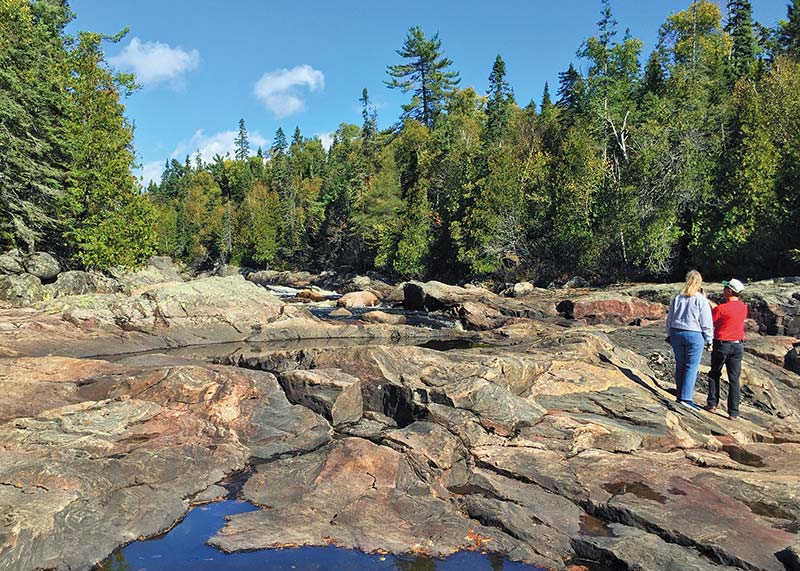
9 Hiking: Lace up your hiking boots! Choose day hikes in Gatineau, Algonquin, Killarney, and on Lake Superior’s North Shore, or tackle the trek from Niagara to Tobermory on the Bruce Trail (click here).
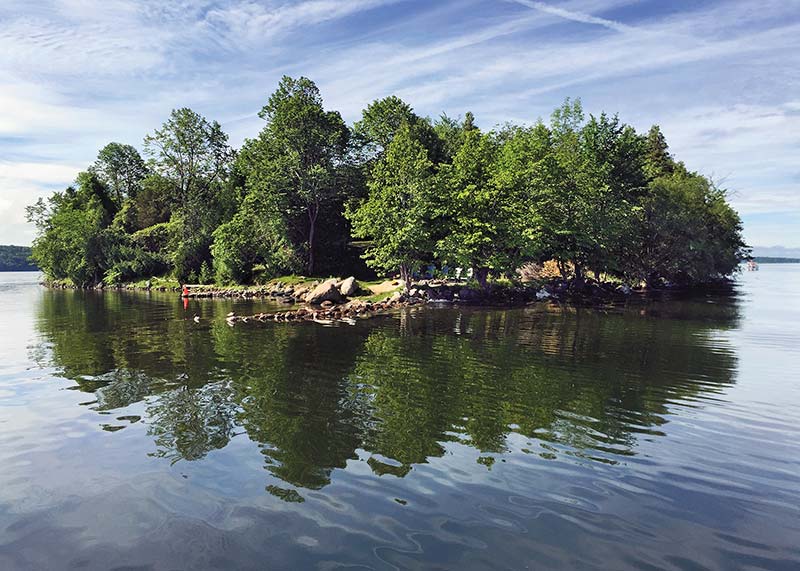
10 Scenic Waterways: Cruise along Lake Superior (click here), the Thousand Islands (click here), and the Rideau Canal (click here); or dive for shipwrecks on Georgian Bay (click here).
Canada’s largest city is home to one of the most multicultural populations on the planet. The country’s cultural hub, Toronto is a major center for film and theater, with a wide range of museums, eclectic boutiques, and diverse neighborhoods. The reclaimed waterfront along Lake Ontario has performance spaces and art galleries, along with a lakeside walking and cycling trail. This diversity has made Toronto one of North America’s most exciting cities for eating, shopping, and simply exploring.
Niagara Falls is a must-see attraction, and whether it’s your first visit or your 50th, feeling the spray and watching the cascading curtains crash into the river below is still a thrill. Yet Niagara is more than just the falls. Here in Ontario’s major wine-producing region, you can sip new vintages or sample local produce, while the well-preserved town of Niagara-on-the-Lake stages the Shaw Festival, one of North America’s premier summer theater festivals.
West of Toronto, sprawling suburbs give way to university towns with interesting arts scenes, wide-open farm country, and sandy beaches. Theater fans flock to the Stratford Festival, while in St. Jacobs, Mennonite communities preserve their traditional customs. You can tour Ontario’s newest wine districts, visit Canada’s southernmost point, or explore the region’s dramatic history as the terminus of the Underground Railroad. And on Lake Huron, you can sit by the shore on some of the province’s loveliest beaches.
Water, water, everywhere—that’s what you’ll find in Eastern Ontario: along Lake Ontario (home to the Prince Edward County wine region and a hotbed of local food), in the Kawarthas region around the city of Peterborough, among the Thousand Islands in the St. Lawrence River, and along the Rideau Canal between Kingston and Ottawa. This region has plenty for the history buff, too, from indigenous culture to Canada’s early development.
Canada’s national capital combines history, culture, and outdoor activities. You can tour Parliament and numerous grand museums, then skate on the Rideau Canal (the world’s largest rink), or hike through sprawling Gatineau Park. For foodies, Ottawa has a branch of Le Cordon Bleu culinary school and plenty of innovative restaurants. This bilingual city knows how to party, too, hosting the nation’s biggest Canada Day celebrations and dozens of festivals year-round.
Getting away to “the cottage” is a long-standing Ontario summer tradition, and even without a cottage of your own, you can escape to this lake district. The highlight is Algonquin Provincial Park, one of the province’s largest protected green spaces.
Cottage Country and Northeastern Ontario are prime canoe trip destinations, with an extensive network of lakes. For a more culturally focused trip, ride the Polar Bear Express train north to James Bay to experience the culture of one of Canada’s largest aboriginal groups.
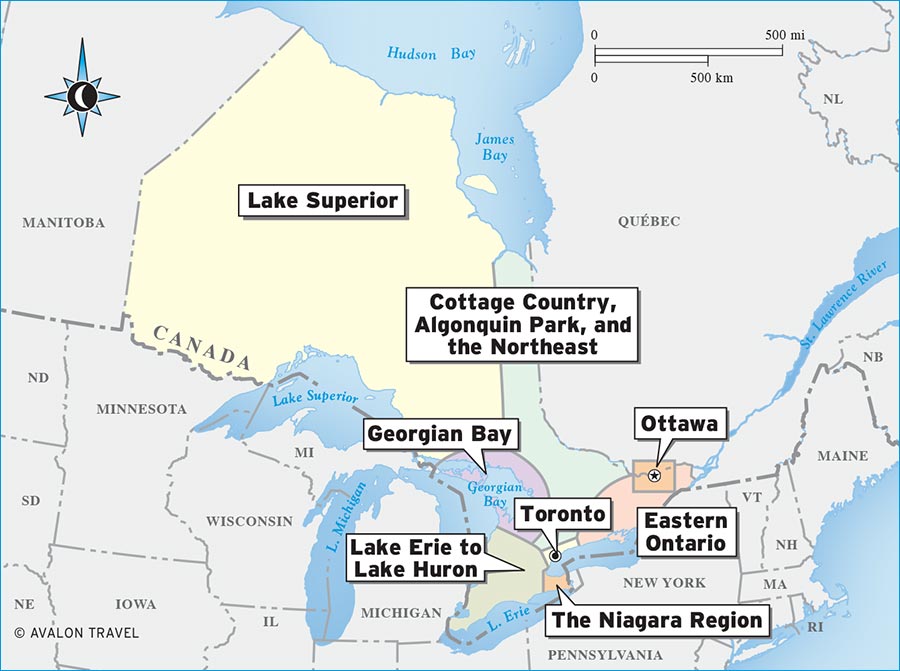
Spectacular scenery surrounds Georgian Bay, where more than 30,000 islands dot the waters. Besides three national parks, several beautifully remote provincial parks, and sections of the Bruce Trail (one of Canada’s longest hiking routes), you’ll find dramatic rock formations, Caribbean-blue water, and a network of lighthouses standing guard along the coast.
Ontario’s earliest European pioneers built a settlement near Georgian Bay, which is now a fascinating historical village. On Manitoulin Island, the Great Spirit Circle Trail is a leader in indigenous tourism, offering numerous ways for visitors to experience First Nations culture.
Craving more eco-adventure? Head north to Lake Superior. Hiking trails crisscross rocky cliffs, while spectacular beaches line Lake Superior’s shores, and you can canoe, kayak, or sail to remote inlets and islands. Yet even if you’re just doing a driving tour along the lake, the views seem to get better around every turn.
Summer is Ontario’s busiest season, especially in the lake regions, the wine country, and around Niagara Falls. The weather is warm—often hot—and everything is open. Many summer theaters, beach destinations, and parks operate only between May and October.
If you don’t need to travel in July and August, though, you’ll often find better weather (sunny skies, moderate temperatures, and lower humidity) in early autumn. October is the peak of the foliage season, when weekend leaf peepers flock to the Ontario countryside. Fall visitors can avoid the crowds by staying in the cities on weekends and heading for the country during the week.
Late spring, from May to early June, is also a good time to travel in Ontario. Although you’ll need to be prepared for some rainy days, it’s relatively quiet, with fewer travelers and moderate shoulder-season lodging prices. Avoid late spring in the north or if you’re planning to hike, canoe, or camp; it’s blackfly season, and the mosquitoes can be fierce, too. You’ll encounter fewer pests in late summer or fall.
Ontario’s winter, which begins in November and can continue into April, is cold and snowy—the season for skiing, snowshoeing, and skating. If you dress for the weather, it’s not a bad time for a city break; in Toronto and Ottawa the cultural calendars are full, and you can often find excellent lodging deals.
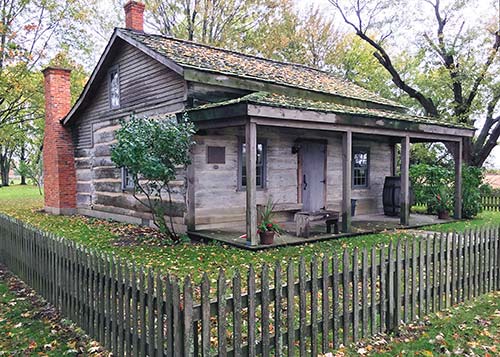
an 1850s log cabin at the Buxton National Historic Site
United States citizens need a valid passport, passport card, or Enhanced Driver’s License for travel to Canada.
All other visitors need a valid passport. Depending on your nationality, you may also need either a visitor visa or an Electronic Travel Authorization (eTA). Visas are not required for citizens of the United States, United Kingdom, Australia, New Zealand, Mexico, Singapore, Japan, South Korea, Israel, and most Western European countries for stays in Canada of less than six months. However, the Electronic Travel Authorization (eTA) is required for visa-exempt visitors who are traveling to Canada by air. Check with Citizenship and Immigration Canada (www.cic.gc.ca) to confirm what documents you require.
No special immunizations or vaccinations are required to visit Canada, but it’s always smart to ensure that your routine immunizations are up-to-date, particularly if you’re traveling with children.
Ontario’s largest airport is Toronto’s Pearson International Airport, with flights from across Canada, the United States, Europe, the Caribbean, Latin America, and Asia. Ottawa is another air gateway, with flights from major Canadian cities, along with several U.S. and some European destinations.
VIA Rail, Canada’s national rail carrier, can bring you to Ontario from across the country, whether you’re starting from Vancouver, Jasper, Edmonton, Saskatoon, Winnipeg, Montreal, or Halifax. From the United States, Amtrak has train service from New York City to Niagara Falls and Toronto. Bus travel is a reasonable option, too, from the northeastern United States or eastern Canada.
Toronto’s comprehensive public transportation system makes a car unnecessary if you’ll be staying in the city. Ottawa and Niagara Falls are also easy to navigate without a vehicle. Otherwise, outside the province’s urban areas, you’ll have more flexibility if you drive or rent a car.
This itinerary takes you through Southern Ontario’s highlights, from Toronto to Niagara Falls, the Muskoka Lakes, Algonquin Provincial Park, and Ottawa, the nation’s capital. It’s easiest to do if you have a car, or pick up a rental car when you leave Toronto (you won’t need it in the city).
Fly into Toronto. Visit the CN Tower for great views across the city and Lake Ontario. If you dare, take the EdgeWalk, a thrilling walk suspended outside the tower, 116 stories above the ground. Back on earth, stroll along the harbor front, then stop for lunch at St. Lawrence Market on your way to the galleries and shops in The Distillery District. Catch the ferry to the Toronto Islands for a late-afternoon walk or bike ride. Wrap up your day with dinner downtown or in the Entertainment District.
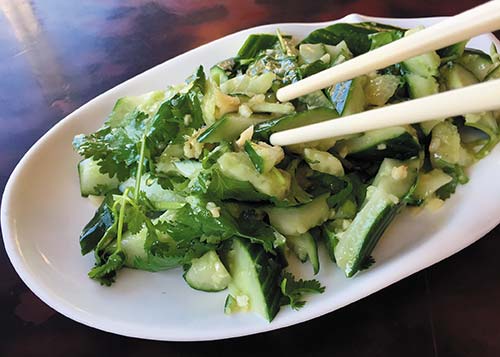
Toronto has several “Chinatowns” with lots of good eating.
Spend today continuing to explore Toronto. Tour the Frank Gehry-designed Art Gallery of Ontario or the massive Royal Ontario Museum. After checking out the entertaining Bata Shoe Museum, have lunch in Chinatown or Kensington Market, or linger over afternoon tea at the deluxe Shangri-La Hotel. Wander along Queen Street West for shopping and gallery-hopping, have dinner at one of the eclectic restaurants, and stop for a nightcap at one of the clubs.
You’re going to Niagara Falls for the day; either rent a car or book a day tour. Don’t miss the Hornblower Niagara Cruise, a boat tour under the falls. Niagara Falls has plenty of other attractions, including the White Water Walk and the Whirlpool Aero Car; for the most dramatic falls views, take a Niagara Helicopters Flightseeing Tour. From the falls, it’s a half-hour drive to Niagara-on-the-Lake, where you can wander the historic downtown and tour local wineries. Have an early dinner, then see a play at the Shaw Festival before returning to Toronto.
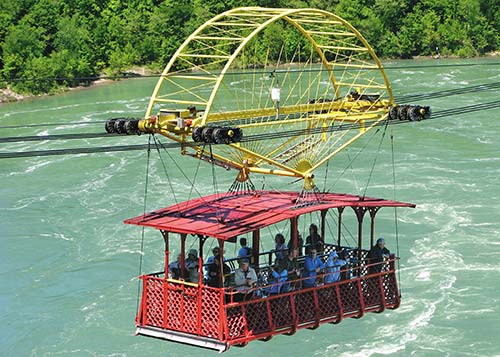
Niagara’s Whirlpool Aero Car opened in 1916.
Today you’ll make a leisurely drive northeast to Muskoka Cottage Country, but your first stop en route is just outside Toronto at the excellent McMichael Canadian Art Collection. Continuing north, visit Muskoka Wharf in Gravenhurst to cruise on a restored steamship and tour a heritage boat museum. In Bracebridge, browse the shops in the cute downtown and continue to Huntsville to have dinner and spend the night.
From Huntsville, you’ll enter Algonquin Provincial Park through the West Gate. Algonquin measures over 7,500 square kilometers (nearly 3,000 square miles), so there’s plenty to explore. Go for a hike or rent a canoe at the Portage Store. Walk through the exhibits at the Algonquin Visitors Centre; there’s usually an interesting nature program happening, as well. Try to schedule your late-summer visit for a Thursday to join in the evening Wolf Howl. Spend the night at one of the park lodges.
Drive out the park’s East Gate, following Highway 60 east toward Ottawa. Your first Ottawa-area stop will actually be across the Ottawa River in Gatineau at the massive Canadian Museum of History, where you can learn almost anything about Canada’s history and culture. After checking into your Ottawa hotel, browse the shops and galleries in the ByWard Market neighborhood. Stay for dinner and catch some music at one of the clubs.
Get to the Parliament Buildings first thing in the morning to take a tour. If you’re visiting in July or August, watch the Changing the Guard, complete with red-coated, fur-hat-wearing guards. For a dose of culture, go to either the National Gallery of Canada or the Canadian War Museum, then take an afternoon stroll or cycle along the Rideau Canal. Have dinner in Little Italy or Wellington West. Wrap up your Ontario week with a concert or play at the National Arts Centre or the Great Canadian Theatre Company.
TOP EXPERIENCE
A long weekend in Toronto will give you time to enjoy the city’s museums, galleries, and theaters. Base yourself at the arty Drake or Gladstone Hotels, or choose a lodging in the Entertainment District, like the Hotel Le Germain, Soho Metropolitan, or Thompson Toronto. Plan a day trip to see a show in either Stratford or Niagara-on-the-Lake.
Start your museum meandering at the Art Gallery of Ontario, which has an extensive collection of Canadian and international art in a striking building designed by Frank Gehry. Next door, you can’t help but notice the Sharp Centre for Design—it’s the checkered box floating in the sky supported by yellow, blue, and purple “pencils.”
Head east to The Distillery District to browse more galleries, including the Artscape Building, which houses more than 60 artist studios. After lunch in one of the district’s cafés, go downtown to see what’s happening at the always-bustling Harbourfront Centre. Check out the Power Plant Gallery, and watch the artists at work in The Craft Studio.
Have dinner in the Entertainment District, then catch a concert at Roy Thompson Hall, a performance of the National Ballet of Canada, or a play at one of the city’s many theaters.
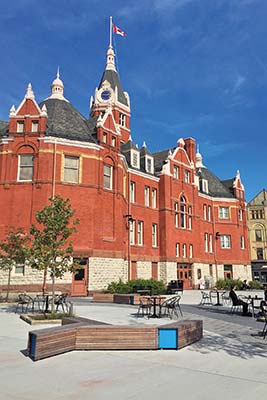
Stratford’s Courthouse Square

Roy Thompson Hall
A tour of the Elgin and Winter Garden Theatre Centre takes you through Toronto stage history in Canada’s only “double-decker” theater. Then get a dose of world culture and natural history at the Royal Ontario Museum. Nearby is the eclectic Bata Shoe Museum, which houses more than 10,000 shoes—from doll-like slippers worn by Chinese women with bound feet to singer Elton John’s sky-high platforms.
Make an excursion to the Junction Triangle to see what’s on at the Museum of Contemporary Art, then take a break at one of the neighborhood’s craft breweries. Your next stop is Queen Street West, where you can wander into whichever galleries and boutiques catch your eye and where you have lots of options for a meal. After dinner, see what’s screening at the TIFF Bell Lightbox.
From Toronto, it’s an easy day trip to either the Shaw Festival in Niagara-on-the-Lake or the Stratford Festival in Stratford. Take a behind-the-scenes tour of the theater before lunch, then see an afternoon matinee. You’ll be back in Toronto in time for a nightcap to top off your weekend of art and culture.
TOP EXPERIENCE
The best time for this tour, which takes in the striking natural scenery around Georgian Bay, is late summer or early fall. The autumn is especially lovely, as the leaves put on their vibrant color show. Just wrap up the trip before Canadian Thanksgiving, the second weekend in October, when the ferry to Manitoulin Island stops running and many of the region’s attractions close for the season.
From Toronto, drive northwest to the Bruce Peninsula. Check into a hotel in Tobermory or set up camp in Bruce Peninsula National Park, then stop into the National Park Visitors Centre to learn more about the region. Climb the Lookout Tower to take in the views, then hike to The Grotto and beautiful Indian Head Cove, with its turquoise waters and intricate rock formations. Back in town, have dinner in a café on Little Tub Harbour.
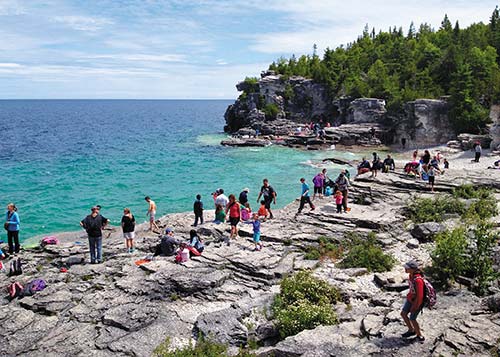
summertime hikers at Indian Head Cove in Bruce Peninsula National Park
Pack a picnic and take the boat to Flowerpot Island to explore Fathom Five National Marine Park, one of only three national marine conservation areas in Canada. It’s a short hike from the ferry dock to the distinctive “flowerpot” rock formations. When you return to the mainland, take a lighthouse tour, then hike along the Bruce Trail, go kayaking, or book a snorkeling tour among the shipwrecks just offshore. Walk along broad Singing Sands Beach and watch the sun set over Lake Huron.
Take the morning ferry to Manitoulin Island. Enjoy a leisurely lunch at Garden’s Gate Restaurant, then spend the afternoon at Providence Bay Beach or splash under Bridal Veil Falls. Spend the night on the Aundeck Omni Kaning First Nations Reserve at Endaa-aang "Our Place," where you can rent a comfortable cottage or sleep in a tepee.
Today you’re exploring Manitoulin’s indigenous heritage with the Great Spirit Circle Trail. Arrange a workshop on traditional First Nations dance, drumming, or crafts. You can also take their Mother Earth Nature Hike, where a native guide will help you identify local plants and understand how they’re used in traditional medicine and cooking, as you climb the Cup and Saucer Trail. In the evening, see a production by the indigenous Debajehmujig Theatre Group.
Get an early start today to drive to Killarney Provincial Park, a vast and dramatic provincial park with rugged white dolomite ridges, pink granite cliffs, pine forests, and crystal-clear lakes. You’ll want to reach Killarney in time for a swim at George Lake and an afternoon of hiking or canoeing. You can camp in the park or stay in one of the lodges in town. Enjoy a fish-and-chips dinner at Herbert Fisheries while you take in the sunset over the harbor.
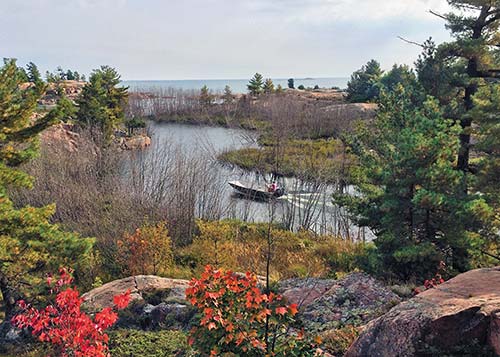
Killarney Provincial Park
In the morning, take another hike or paddle before driving south toward Parry Sound, stopping for a picnic or a stretch-your-legs hike at Grundy Lake Provincial Park along the way. In Parry Sound, arrange a flight-seeing tour, the most thrilling way to take in Georgian Bay’s 30,000 Islands region; if you’re with a special someone, schedule a romantic sunset flight—complete with champagne. If you’d rather stay close to the ground, explore the islands with a sightseeing cruise on the Island Queen. In the evening, see a play, concert, or lecture at the Charles W. Stockey Centre for the Performing Arts.
Your first stop today is Killbear Provincial Park, about 45 minutes’ drive from Parry Sound. While it’s less known than Ontario’s larger “destination” parks, its dramatic granite cliffs and quiet sandy beaches are well worth exploring. Later in the day, drive south to Honey Harbour or Port Severn, where you’ll spend the night.
Of the thousands of islands that dot Georgian Bay, 63 are protected in the Georgian Bay Islands National Park. Your destination today is Beausoleil Island for a full day of hiking, mountain biking, swimming, picnicking, and exploring. Back on the mainland, drive south to Midland for dinner and check in to a hotel, where you’ll stay for the next two nights.
Travel back in time to the 1600s at Sainte-Marie Among the Hurons, a historical village that reimagines the first European settlement in Ontario, where French Jesuits lived and worked with the indigenous Wendat (Huron) people. In the afternoon, go canoeing at Wye Marsh Wildlife Centre, or go for a hike or swim at Awenda Provincial Park.
As you begin your drive south, stop for a stroll along Wasaga Beach, the world’s longest freshwater beach. Another worthwhile detour is the small town of Creemore, where art galleries, cafés, and shops line the main street. After you’ve had your fill of browsing, have a bite to eat before making your way back to Toronto.
Oh, the lovers come a thousand miles,
They leave their home and mothers,
Yet when they reach Niagara Falls
They only see each other.
Dating back to the 1840s, this song suggests that, even in the 19th century, Niagara Falls was already a popular destination for honeymooners. And why not? What’s more romantic than canoodling with your beloved in view of the rushing falls?
Book a room with a view of the falls, perhaps at the Sheraton on the Falls or the Marriott Niagara Falls Fallsview Hotel and Spa. Alternatively, choose a smaller upscale property, like the Sterling Inn & Spa, that will pamper the two of you.
For more luxurious accommodations, consider staying in Niagara-on-the-Lake at the elaborately appointed Prince of Wales Hotel or the deluxe modern 124 on Queen. You could spend time at the falls during the day and retreat to this more peaceful village in the evenings.
When you’ve had your fill of strolling hand-in-hand in front of the cascading falls, you might want to escape from Niagara Falls’s hustle and bustle. Rent bicycles—perhaps a bicycle built for two—and cycle the riverside path along the Niagara River Parkway, or book a private half-day wine and cycling tour to the nearby Twenty Valley.
Plan time for wine touring in Niagara-on-the-Lake; visit the luxurious tasting room at Stratus Vineyards or reserve a Taste of Gold experience at Peller Estates Winery to sample their top wines. The Peller Estates Winery Restaurant is one of the area’s best lunch stops, or have your midday meal among the vines at Ravine Vineyard Bistro or on the patio at Treadwell Farm-to-Table Cuisine. Stop to lick each other’s gelato at Il Gelato di Carlotta in Niagara-on-the-Lake.
Head back to the falls for an aerial tour with Niagara Helicopters Flightseeing, an experience that’s even more dramatic at sunset. Or take a sunset trip to the base of the falls on the Hornblower Niagara Cruises. For dinner, choose somewhere upscale and romantic like Casa Mia Ristorante.
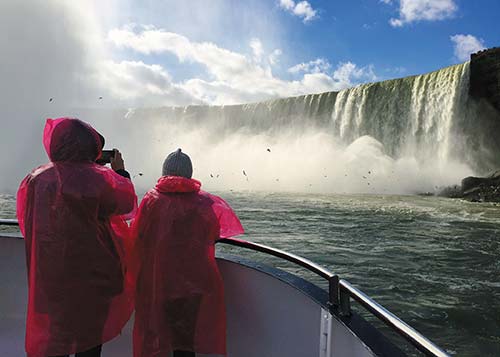
The Hornblower Niagara Cruises take you right under the spray.
Wrap up your day by watching the Fireworks over the Falls, then head back to your hotel to spark your own fire.
To see northern Ontario, combine a road trip with train travel. In fact, as you travel toward James Bay, you have to leave your car behind—no roads run this far north. Begin in Toronto, stop for canoeing and hiking in the Temagami lake lands, and continue north to Cochrane to catch the Polar Bear Express train to the Cree communities of Moosonee and Moose Factory Island. This trip is best in July or August, when the weather is warm, and the Polar Bear Express runs Sunday to Friday.
Get an early start from Toronto on your drive north to Temagami; allow at least an extra hour to stop to eat in Bracebridge, Huntsville, or North Bay. You’ll arrive at Smoothwater Wilderness Lodge in time for a late-afternoon paddle on the property’s lake and a leisurely family-style dinner; the lodge is the best place to eat in the area, and a bonus is the travel tips you’ll get from the other guests.
Spend the day outdoors around Temagami. Ask the Smoothwater staff to organize a canoe, kayak, or hiking trip in Lady Evelyn Smoothwater Provincial Park. Return to the lodge for dinner and spend the evening relaxing in the Gathering Hall.
You’ll have time for a brief early-morning hike or paddle in Temagami before driving north to Cochrane. Arrive in time to visit the Polar Bear Habitat before checking into your hotel.
Today you’re going where no roads go—north toward James Bay on Ontario Northland’s Polar Bear Express train. You’ll arrive in Moosonee by midafternoon; walk to the docks to catch the water taxi to Moose Factory Island. Spend the night at the Cree Village Ecolodge, run by the Cree First Nation, and have dinner (with traditional indigenous ingredients) in the lodge’s lovely dining room.
You’ll spend most of the day on Moose Factory Island. Visit the Cree Cultural Interpretive Centre to learn more about Cree culture, language, traditional medicine, and food. Walk over to the Moose Cree Complex; part shopping mall, part community center, it’s the hub of the First Nations reserve, so you can glimpse what local life is like on this remote island. After lunch, take a boat tour to James Bay.
The Polar Bear Express heads south in the late afternoon and will take you as far as Cochrane, where you’ll need to spend the night.
In the morning, begin your long drive back to Toronto. If you have time, add a stopover in Huntsville and a visit to Algonquin Provincial Park.